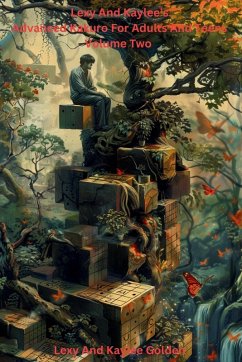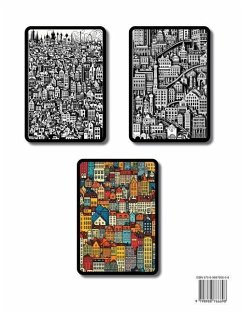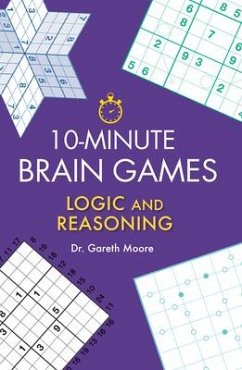
Lexy and Kaylee's Advanced Nurikabe for Adults and Teens Volume One
Versandkostenfrei!
Versandfertig in 1-2 Wochen
10,99 €
inkl. MwSt.

PAYBACK Punkte
5 °P sammeln!
From the creators of Lexy and Kaylee's Canine Coloring Book for Children series now have put together an activity book for Adults and Teens. Inside there are 52 advanced 24x24 Nurikabe Puzzles in an easy to carry 6 x 9 format. Great for taking with you on plane and train rides or to sit at the beach or by the pool. Nurikabe is a logic puzzle that originated in Japan. The puzzle is named after a mythical creature from Japanese folklore, believed to create invisible walls to block travelers. Here's an overview of its history and how it has evolved: Origins and Development: The name "Nurikabe" is...
From the creators of Lexy and Kaylee's Canine Coloring Book for Children series now have put together an activity book for Adults and Teens. Inside there are 52 advanced 24x24 Nurikabe Puzzles in an easy to carry 6 x 9 format. Great for taking with you on plane and train rides or to sit at the beach or by the pool. Nurikabe is a logic puzzle that originated in Japan. The puzzle is named after a mythical creature from Japanese folklore, believed to create invisible walls to block travelers. Here's an overview of its history and how it has evolved: Origins and Development: The name "Nurikabe" is derived from a Japanese folklore creature that is said to appear as an invisible wall obstructing travelers' paths. This connection to the mythical creature adds a cultural layer to the puzzle's identity. The exact origins of the Nurikabe puzzle is not well-documented, but it is known to have been popularized by the Japanese puzzle company Nikoli. Nikoli has been instrumental in developing and spreading various types of logic puzzles, including Sudok. Nurikabe was first introduced in Nikoli's Puzzle magazine in the late 20th century. The puzzle quickly gained a following among puzzle enthusiasts in Japan and later internationally. Spread and Popularity: Like many other logic puzzles, Nurikabe became popular in Japan through Nikoli's publications. Japanese puzzle solvers appreciated its unique challenge and engaging nature. Nurikabe began to spread outside Japan in the early 21st century as puzzle enthusiasts and publishers in other countries discovered it. The rise of the internet and puzzle apps contributed significantly to its global popularity. Nurikabe is now available on various online puzzle platforms and mobile apps, allowing a global audience to enjoy the puzzle. Mechanics and Rules: Nurikabe is played on a rectangular grid, with some cells containing numbers. The goal is to shade specific cells to form a continuous "wall" while leaving the remaining cells as "islands." Cultural and Educational Impact: Nurikabe has a dedicated following among puzzle enthusiasts. It is often featured in puzzle magazines, websites, and competitions. The puzzle is also used in academic settings to teach logical reasoning and problem-solving skills. Its unique rules and requirements make it an excellent exercise in spatial awareness and deductive logic. Variations and Adaptations: Over time, different variations of Nurikabe have emerged, introducing new challenges and twists to the original rules. Some puzzles may have different grid shapes or additional constraints to increase difficulty. Nurikabe has also inspired hybrid puzzles that combine their elements with other logic puzzles, creating new and innovative challenges for solvers. Nurikabe is a logic puzzle deeply rooted in Japanese culture and folklore. It has grown in popularity both in Japan and internationally, thanks to its challenging nature and the efforts of puzzle publishers like Nikoli. Today, it continues to be a beloved puzzle enjoyed by many worldwide.














